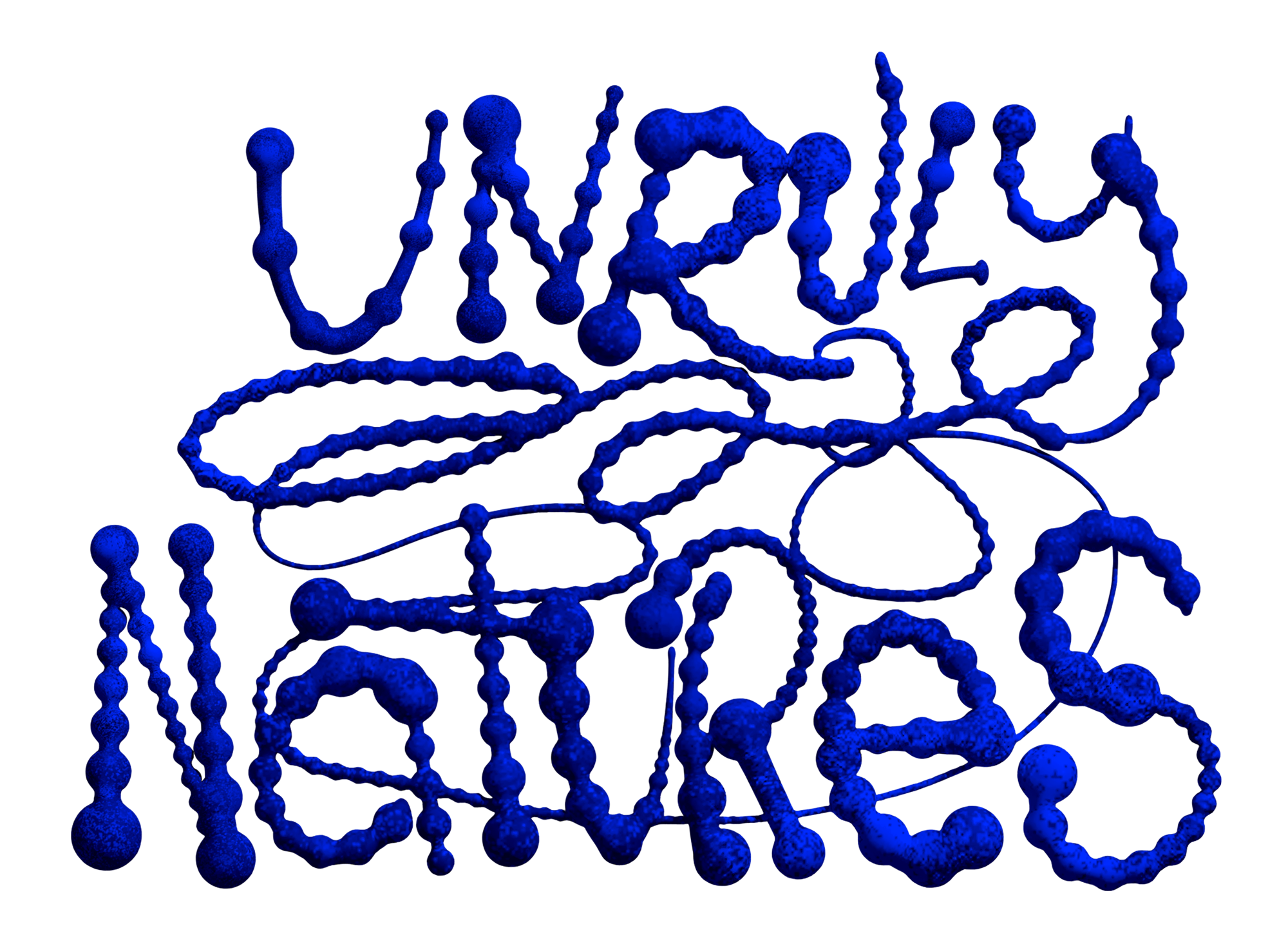︎
Field Notes September 22th 2022
Written by Flurina Gradin
Photographs by: Offshore Studio and Flurina Gradin
Toad Calls from the Track Field
︎
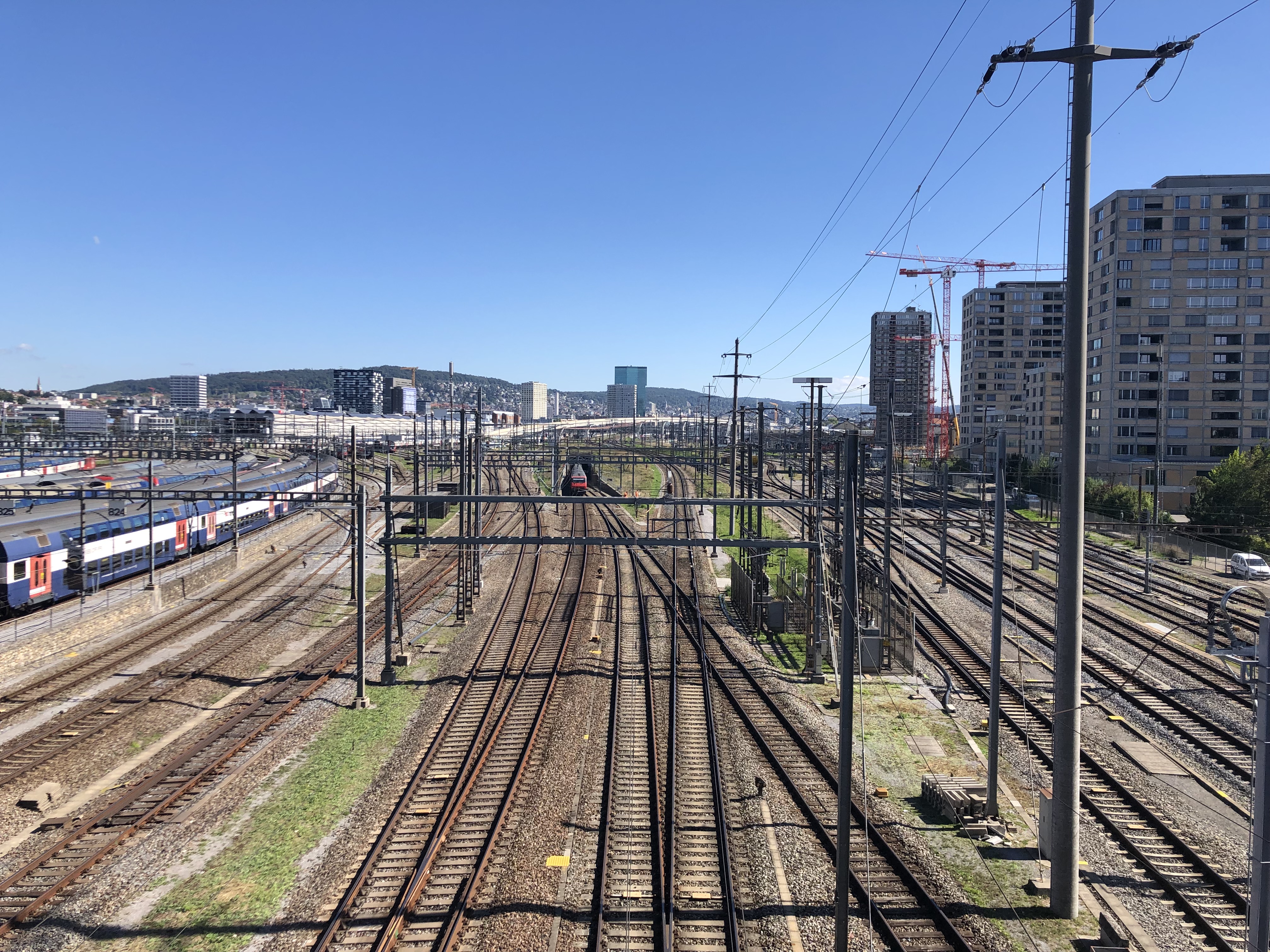 The track field seen from Europabrücke next to Zurich Altstetten Station.
The track field seen from Europabrücke next to Zurich Altstetten Station. The track field between Zurich main station and Zurich Altstetten station stretches over a distance of 3.5 km, forming one of the largest wilderness areas in the city of Zurich.
The area has been shaped by the successive infrastructural expansion of the Swiss Railway Company, SBB and has consequently been inaccessible to the public. Today, more than 450`000 train passengers pass through the area every day. Probably most of them find it difficult to imagine that the site is integrating parts of the former floodplain landscape of the river Limmat. The area was designated a municipal nature conservation object already in 1989, and it still represents the largest and one of the most valuable ruderal areas in the center of Zurich. Classified as a local biodiversity hotspot1, the area offers a rather fragile, and ecologically highly valuable habitat for numerous animal and plant species, some of which are threatened.
As our group embarks on the guided walk "Sensing Biotopes"2 through various floors and areas of Zurich's main train station at rush hour on this Thursday evening, it becomes immediately apparent that the site of Switzerland's largest train station is a highly complex and literally a multi-layered hybrid ecosystem – also, but not only because of its track field. During the walk, our eyes are sharpened for supposedly invisible interweavings, some examples of which will be listed below.
One of the most prominent examples is the "Sihl river, both wild and tame"3 , which has been extensively renaturalized around the station area in 2019. It flows through the station at the middle floor level, with its shopping malls, well hidden from view and general perception. Water birds and fish cross the station by water. Even small mammals have been enabled to follow the course of the Sihl from southwest to northeast on a narrow footbridge along the tunnel wall at the river's edge.
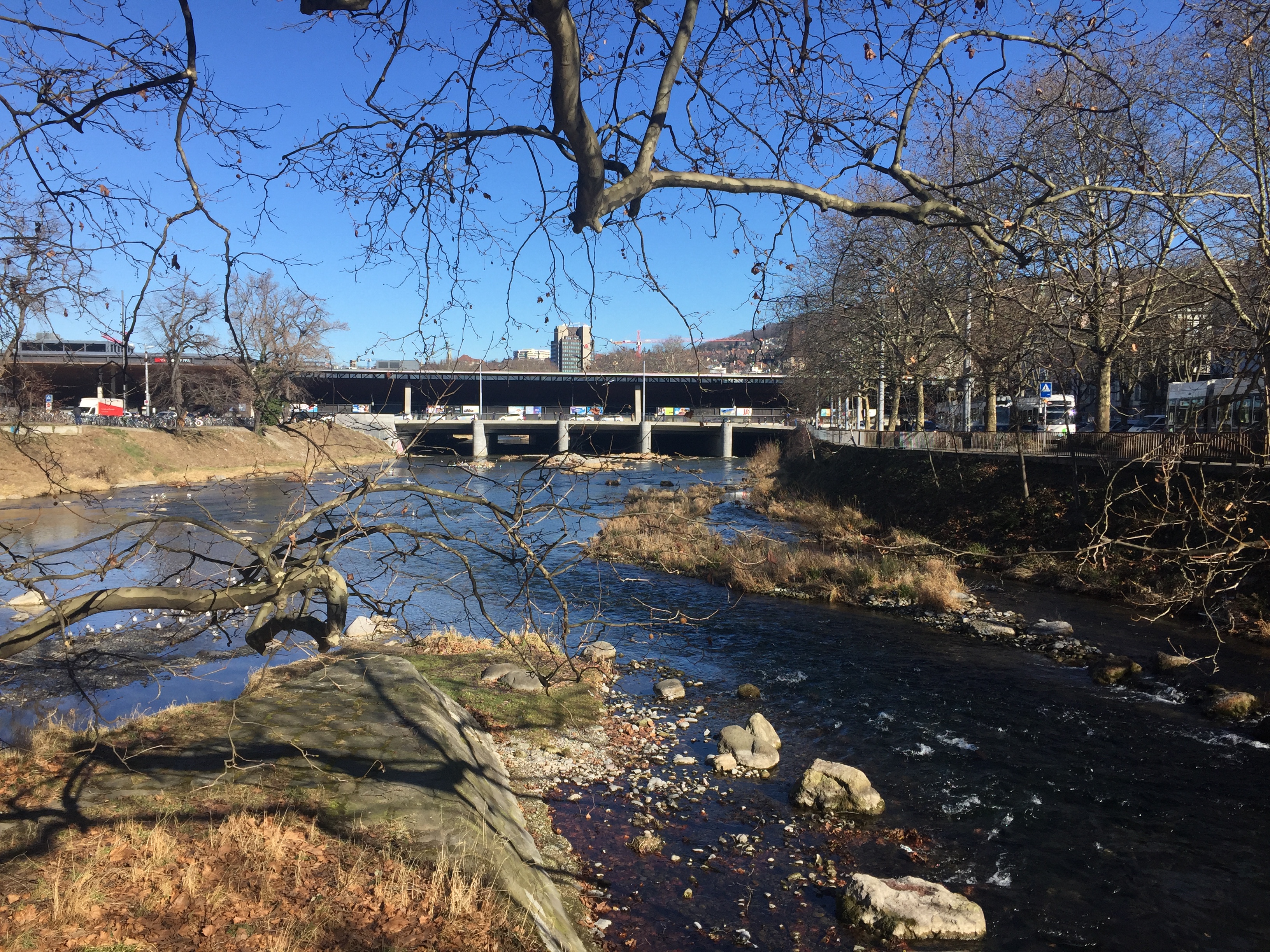

Guiding the group first along the river and then within the station’s inner space, our group is gathered to a particular inconspicuous stairway in a middle passage, drawing our attention to the immediate proximity of the sprawling Sihl water flowing hiddenly on the other side of the solid wall. In the future, the participants of the excursion may pause briefly here, remembering the invisible proximity of water. One floor up, outdoors again, they will cast a glance back into the depths on the perrons at the ground floor level to follow the course of the Sihl's water a few meters below their feet in their thoughts. Within the train station, the river exists as an unexpectedly lively natural entity in a rather clocked, programmed and structured infrastructural environment, which eventually speaks out with very powerfully depending on the water level.
*We leave the enveloped Sihl waters and walk towards the station's main hall. Our gaze is directed to the heavily sealed and highly frequented transit space, this infrastructural conglomerate filled with continuous choreographies: Anonymous streams of commuters, long-distance travelers, temporary guests, and people hungry for shopping alternating in constantly changing rhythms.
However, apart from humans, the setting of the train station with its historic track hall and platforms also offers living space for numerous other-than-human species.
Over the past years, Jonas Gillmann and Seraina Dür who guide the tour together with myself today have dealt intensively with the coexistence of humans and pigeons in their work. They draw the group's attention to the large pigeon loft, which is set high apart from the hustle and bustle in the hall at the height of the large station clock.
Inspired by a new awareness of this coexistance, we become increasingly sensitive not only to the pigeons, but also to the extensive barricades and defensive installations put in place against birds. In parallel, it turns obvious that also the pigeons defy the deterrent gestures of control, settling on small ledges and strolling through the hall. As we continue walking along platform 13, Seraina Dür points out drinking fountains and benches, which form common places of learning encounters for humans, pigeons and house sparrows. Testing our sensory and imaginary capacity for a short time, we silently put ourselves into the perspective of pigeons and their needs and think with their desires for the station as a pigeon home.
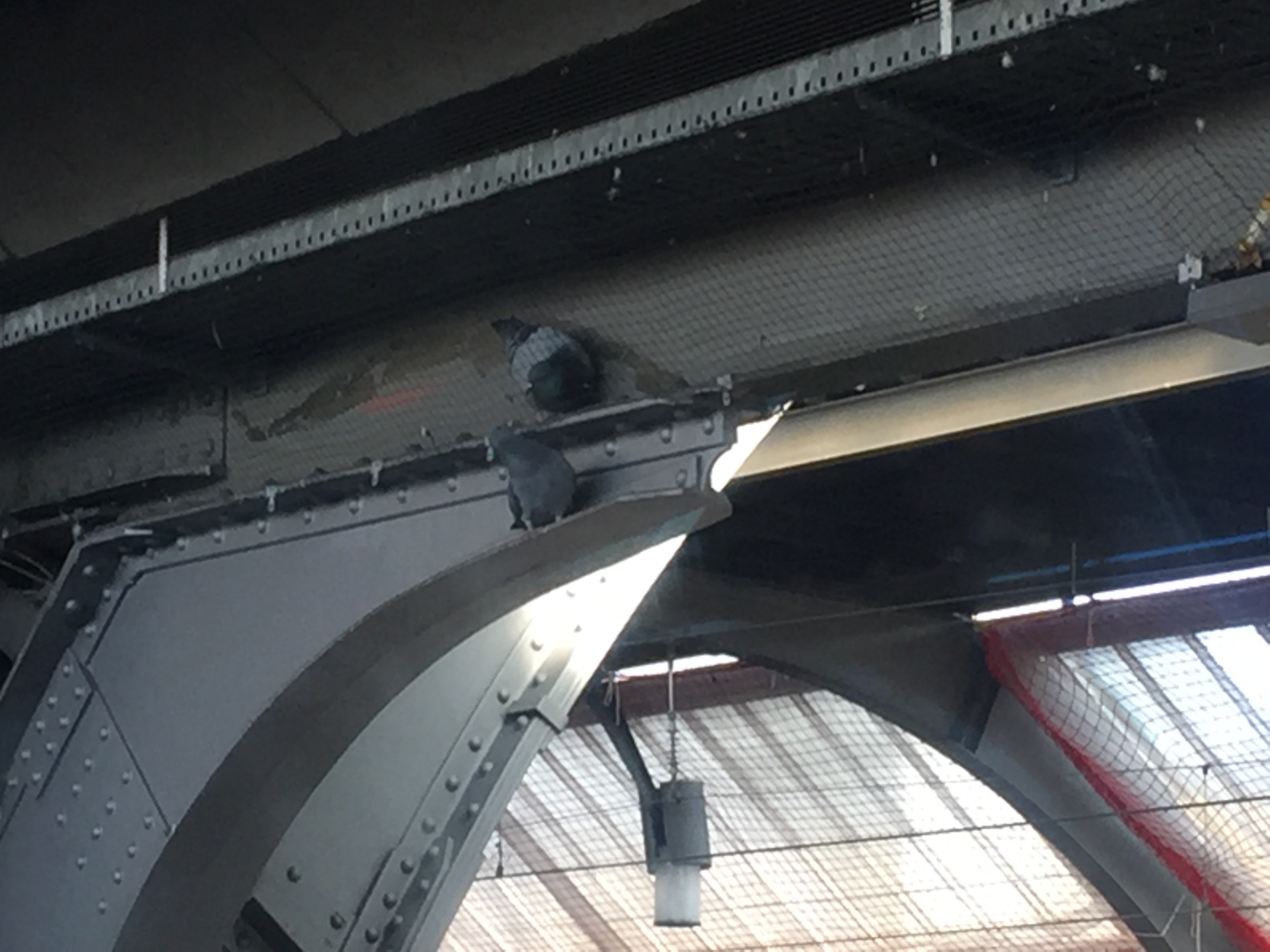
Lost in thought, our group arrives at the head end of platform 13 – the bustling station area is already far behind and the acoustically emphasized teeming scenery has given way to the open view into the track field. The proximity of the inaccessible area makes it a place of longing, an unreachable and yet all the more fascinating space of urban wilderness. The view to the west, with the sun setting at dusk along the artificial new buildings of the Europaallee, the Negrellisteig and Zurich Altstetten. The view can be compared with the outlook over a plain from a mountain peak. However, only a fraction of the entire track field is visible. It’s quiet – except for the incoming and outgoing trains.
*There is no spot here that has not been designed and affected by the SBB. Despite this making it essentially an anthropogenic space, the entire area is probably populated and traversed more frequently by animals than by people.
As a passionate birdwatcher and urban ecologist by heart, I frequently guide tours for BirdLife Switzerland through the highly stressed and rich urban ecosystems in the dense core of the city. While preparing this transdisciplinary format together with Jonas Gillmann and Sereina Dür around the Zurich main station, I was deeply touched by this multilayered yet in large parts inaccessible urban biotope and by the invisibility of its animal and plant inhabitants and their individual histories of existence.
An emblematic example of this fascinating infrastructural wilderness retreat is the turbulent development of the population of yellow-bellied toads (Bombina variegata). The living being is a rare and shy amphibian species with a bright yellow underside, which most likely already inhabited the original floodplain landscape of the nearby Limmat river before human intrusion. Due to increasing settlement pressure during Zurich’s development into a modern city, the yellow-bellied toads were pushed back further and further in the 20th century until they disappeared in most of its original habitats – due to the increasing sealing of the soil.»4. Sadly this is the case for most amphibian species, which have had an extremely difficult time in urban areas and have performed low survival rates, especially in dense, sealed, hot and dry settlement areas.
Already in the early 1990s, however, a group of biologists discovered some individual small historical toad populations at various locations along the track field. The cautious biologists drew the attention of the SBB to the fact that, with appropriate promotion measures, an increase in the local population would be realistic. It was the starting point for intensified environmental initiatives in the track field. In cooperation with the city of Zurich, regular mapping of the area has since been commissioned, revealing an astonishing diversity of flora and fauna. Based on their mapping, the SBB Infrastructure Division drew up a comprehensive ecological compensation and assessment model in 1994, based on three pillars: a grid cell assessment, a replacement area concept and a target species concept. The aim was to achieve specific optimization of the track area as a valuable habitat for various target species (including the yellow-bellied toad), and to ensure the ecological quality of the environment in the long term. With success! An exemplary look at the toads shows that today, in addition to the retention basins for cushioning heavy precipitation, the track field area is also adorned with several simple toad-friendly water basins. The artificially created spawning habitats have been gratefully accepted and the population has increased to over 90 individuals again.

Among the
area's other
inhabitants
are numerous species of wild bees, or the wall lizard (Podarcis muralis). As a reptile species still rarely found north of the Alps in the 1990s, it now occupies territories rather to the disadvantage of the sand lizard (Lacerta agilis) and is spreading rapidly. Nevertheless it is still counted among the target species of the SBB.
Also the spectacular and beautiful blue-winged sand cricket (Sphingonotus caerulans) is entangled to the area. Much to the delight of those responsible for the biodiversity monitoring of the green roofs along the Europaallee, the cricket population even made it to lofty heights on the extensively greened roofs of the new buildings a few years ago.
The species could almost be considered a conciliatory mediator for the otherwise often criticized low level of biodiversity of the largely sealed properties along Europaallee between Lagerstrasse and Gleisfeld.5
And yet, even the «biodiversity hotspot» of the track field did not remain spared by real estate projects. On the contrary: its central location in the city, makes it a highly sought-after zone. Due to the extensive construction activities of the SBB Real Estate Division since the early 2000s, valuable areas of the nature reserve have been lost for the time being. The existing environmental compensation and evaluation model of the Infrastructure Division has so far been insufficiently applied by the SBB Real Estate Divison and not enough compensation areas have been defined.
In an optimized outlook on local political ecologies, it would be essentially desirable that SBB as a large and powerful corporation intensifies caring activities. For the long-term preservation of the unique nature conservation area of the track field, two approaches could lead the starting phase: firstly, an intensified cooperation between the two divisions SBB Infrastructure and SBB Real Estate, putting emphasis on the creation and preservation of highly valued ecological habitats and the promotion of species; secondly, a revision and updating of the existing compensation and evaluation model.
For example, species knowledge of wild bees and other insects has been continuously expanded since 1994. Today, the protection of insects is much more urgent and effective promotion measures are established that were not conceivable back at the time. By contrast the wall lizard now moves independently on the northern side of the Alps and could be removed from the list of target species. Instead, the endangered smooth snake (Coronella austriaca) could be promoted as a reptile species, which fortunately was recorded for the first time only recently.
Also the spectacular and beautiful blue-winged sand cricket (Sphingonotus caerulans) is entangled to the area. Much to the delight of those responsible for the biodiversity monitoring of the green roofs along the Europaallee, the cricket population even made it to lofty heights on the extensively greened roofs of the new buildings a few years ago.
The species could almost be considered a conciliatory mediator for the otherwise often criticized low level of biodiversity of the largely sealed properties along Europaallee between Lagerstrasse and Gleisfeld.5
And yet, even the «biodiversity hotspot» of the track field did not remain spared by real estate projects. On the contrary: its central location in the city, makes it a highly sought-after zone. Due to the extensive construction activities of the SBB Real Estate Division since the early 2000s, valuable areas of the nature reserve have been lost for the time being. The existing environmental compensation and evaluation model of the Infrastructure Division has so far been insufficiently applied by the SBB Real Estate Divison and not enough compensation areas have been defined.
In an optimized outlook on local political ecologies, it would be essentially desirable that SBB as a large and powerful corporation intensifies caring activities. For the long-term preservation of the unique nature conservation area of the track field, two approaches could lead the starting phase: firstly, an intensified cooperation between the two divisions SBB Infrastructure and SBB Real Estate, putting emphasis on the creation and preservation of highly valued ecological habitats and the promotion of species; secondly, a revision and updating of the existing compensation and evaluation model.
The concern gains all the more relevance as a highly frequented space like Zurich's main train station is characterized as a pilot area for rapid urban ecological changes.
For example, species knowledge of wild bees and other insects has been continuously expanded since 1994. Today, the protection of insects is much more urgent and effective promotion measures are established that were not conceivable back at the time. By contrast the wall lizard now moves independently on the northern side of the Alps and could be removed from the list of target species. Instead, the endangered smooth snake (Coronella austriaca) could be promoted as a reptile species, which fortunately was recorded for the first time only recently.
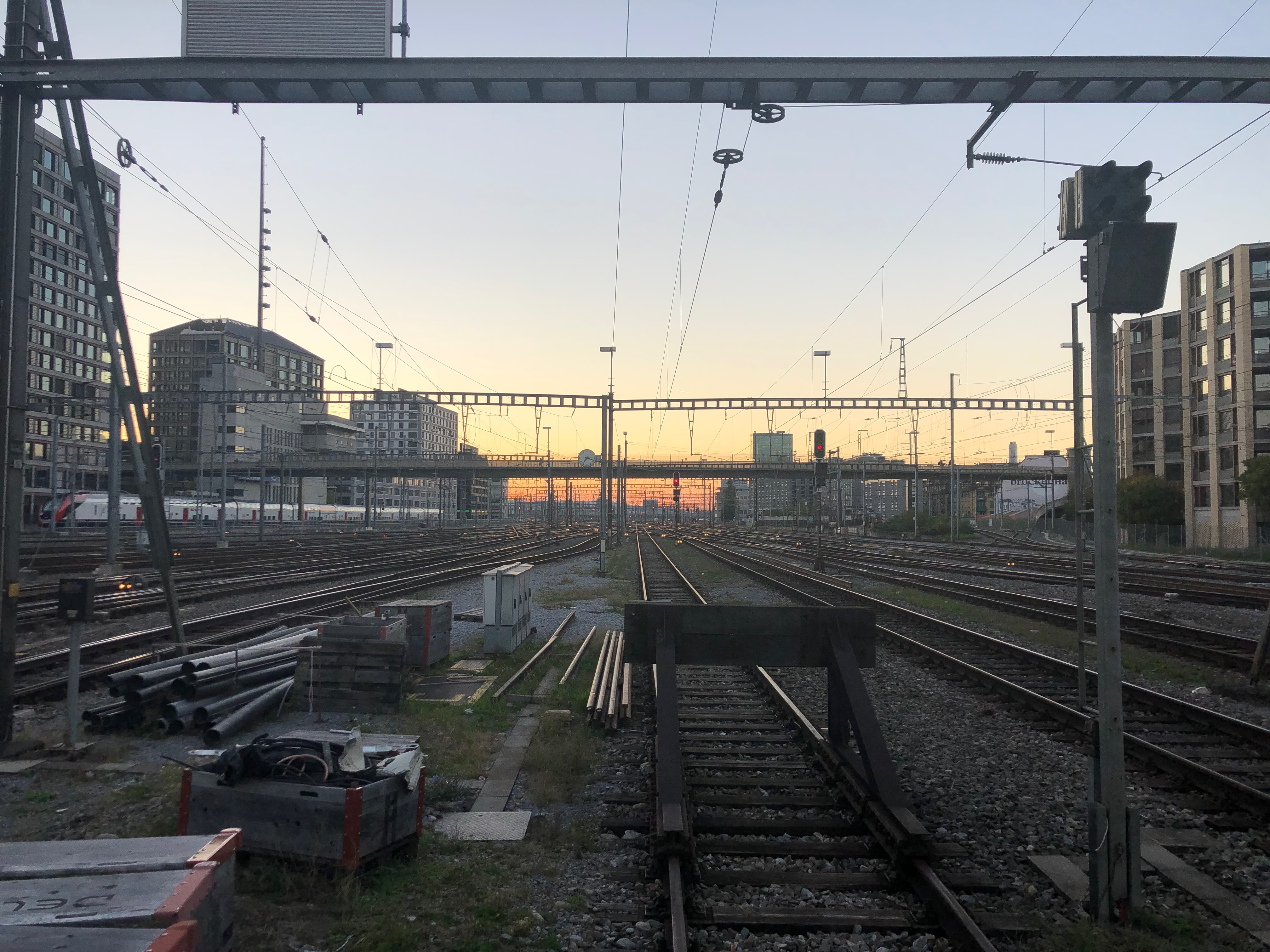
While our group rests at the top of platform 13 and the guided walk reaches its conclusion, the sun finally sets in the west turning the track area in front of us into twilight. Every now and then trains thunder by. Otherwise, the scene is strangely quiet. We feel the temptation to explore further the track area of Zurich's main station on foot, but it lies unreachable in front of us.
A ruderal zone, a hybrid biotope with a strong political charge, that is definitely worth further research. It is to be hoped that for this habitat, the conflicting interests of a major corporation such as the Swiss Railway Company, the city of Zurich, and the animal and plant species living on site can develop more distinctly into a more-than-human environment of the future. An ecosystem in which travelers and pigeons meet at eye level, yellow-bellied toads and sand shrikes are promoted instead of displaced by biodiversity-enhancing real estate management, and the water of the Sihl continues to play freely accompanying the incoming and outgoing train traffic.
A ruderal zone, a hybrid biotope with a strong political charge, that is definitely worth further research. It is to be hoped that for this habitat, the conflicting interests of a major corporation such as the Swiss Railway Company, the city of Zurich, and the animal and plant species living on site can develop more distinctly into a more-than-human environment of the future. An ecosystem in which travelers and pigeons meet at eye level, yellow-bellied toads and sand shrikes are promoted instead of displaced by biodiversity-enhancing real estate management, and the water of the Sihl continues to play freely accompanying the incoming and outgoing train traffic.
Footnotes
1 for further information see here: https://www.stadt-zuerich.ch/ted/de/index/gsz/beratung-und-wissen/naturschutz/naturschutz/naturschutzgebiete.html#kommunale_schutzobjekte (retrieved 230110)
2 The walk "Sensing Biotopes: Trainstation Temporalities" was collaboratively developed by Seraina Dür, Jonas Gillmann and Flurina Gradin as part of the residency program "Otherwise 22/23". It was successfully conducted for the first time with guests in April 2022. The implementation described in these notes took place with the same team in a slightly modified form in September 22.
3 Blanc, Jean-Daniel: Die wilde und die zahme Sihl: Eine Landschaft im Fluss der Zeit. 1. Ed. Zürich: Hier und Jetzt, 2021.
4 Ineichen, Stefan, Max Ruckstuhl, und Stefan Hose. Neue Stadtfauna: 700 Tierarten der Stadt Zürich. 12022. Ed. Bern: Haupt Verlag, 2022.
5 see for example: „Europaallee: Neue Blicke auf einen oft gescholtenen Stadtteil“. Neue Zürcher Zeitung, 2. Juni 2021, Abschn. Zürich. https://www.nzz.ch/zuerich/die-europaallee-ist-in-zuerich-angekommen-neue-blicke-auf-ein-heftig-gescholtenes-stueck-stadt-ld.1627478. Retrieved 230110.
1 for further information see here: https://www.stadt-zuerich.ch/ted/de/index/gsz/beratung-und-wissen/naturschutz/naturschutz/naturschutzgebiete.html#kommunale_schutzobjekte (retrieved 230110)
2 The walk "Sensing Biotopes: Trainstation Temporalities" was collaboratively developed by Seraina Dür, Jonas Gillmann and Flurina Gradin as part of the residency program "Otherwise 22/23". It was successfully conducted for the first time with guests in April 2022. The implementation described in these notes took place with the same team in a slightly modified form in September 22.
3 Blanc, Jean-Daniel: Die wilde und die zahme Sihl: Eine Landschaft im Fluss der Zeit. 1. Ed. Zürich: Hier und Jetzt, 2021.
4 Ineichen, Stefan, Max Ruckstuhl, und Stefan Hose. Neue Stadtfauna: 700 Tierarten der Stadt Zürich. 12022. Ed. Bern: Haupt Verlag, 2022.
5 see for example: „Europaallee: Neue Blicke auf einen oft gescholtenen Stadtteil“. Neue Zürcher Zeitung, 2. Juni 2021, Abschn. Zürich. https://www.nzz.ch/zuerich/die-europaallee-ist-in-zuerich-angekommen-neue-blicke-auf-ein-heftig-gescholtenes-stueck-stadt-ld.1627478. Retrieved 230110.
